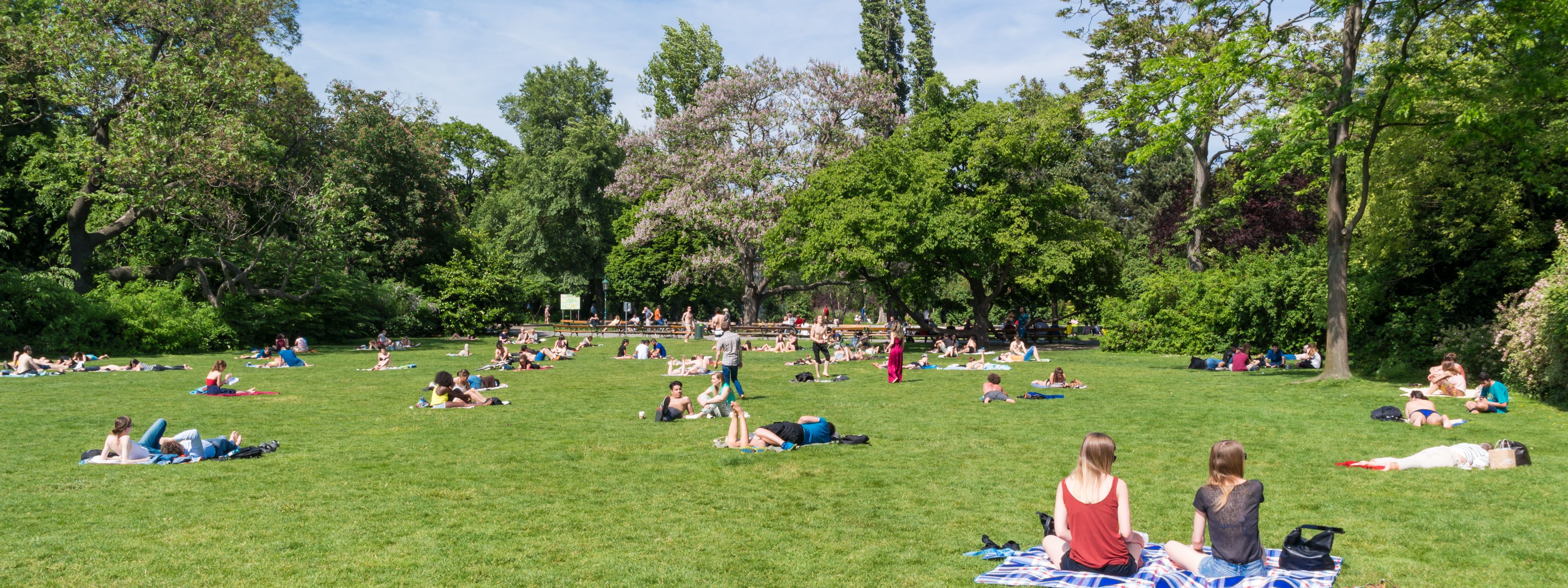
(Vienna, 04-11-2021) During the lockdowns of the coronavirus pandemic, it was often difficult for residents of densely built-up urban areas to comply with social distancing rules and required behaviours in heavily frequented places. Extensive use was made of inner-city parks and green spaces for recreational purposes. "Regular physical exercise is important for our mental and physical health. The availability of enough green spaces in urban areas is important, as it provides areas for exercise and for meeting others. There is a huge need for nature within the city, particularly in exceptional situations," says environmental health expert Daniela Haluza from MedUni Vienna's Center for Public Health, who, together with colleagues from the University of Natural Resources and Applied Life Sciences Vienna (Boku Vienna), has now published a new study on the subject, analysing the provision of green spaces in Vienna in a social context.
The main finding of the analysis: a sufficiency of green open spaces and greened buildings not only helps the population to cope with the consequences of climate change, but also has a beneficial effect on people's health and well-being in times of a pandemic. Green open spaces in the city are synonymous with high-quality urban living spaces.
Demand for more green space in Vienna - especially in the city centre
"Many city-centre pavements are less than two metres wide, making it spatially difficult to maintain sufficient social distance (keyword: baby elephant). This was particularly challenging during the restrictions imposed to manage the pandemic," stresses health expert Haluza. According to the research results, the numbers speak for themselves - for example: Josefstadt only has 0.8 m2 of green space per person, Neubau has 1.2 m2 and Margareten has 1.5 m2. "That's simply too little space as a per capita average," the researchers conclude.
If one takes the federal capital as a whole, there is an average of 9.3 m2 of green space per inhabitant. However, this compares with 12.4 m2 of road space per capita (not including footpaths and structurally separated cycle paths). The disparity is even greater in built-up inner-city areas, e.g. with 1.2 m2 of green space as against 6.5 m2 of road space in the Neubau district.
According to Haluza, these areas, which are mainly given over to motorised traffic, could alternatively be used as green open spaces. So far, little attention has been paid to the social fairness of this situation. In Vienna, socio-economically disadvantaged groups often live in densely populated, built-up areas with high traffic volumes and little green space. Moreover, it is precisely these socially disadvantaged people who are more likely to live in cramped conditions, suffer from health problems and are difficult to reach through medical information campaigns - as a result, restrictions during the pandemic and the effects of climate-change hit these people particularly hard.
"Our research findings clearly show that the socially equitable distribution of green and open spaces - both in terms of quality and quantity - is an explosive issue in times of pandemics and climate change. We believe that a rapid and radical rethink is necessary if we are to improve the quality of life in cities. The road spaces in the city should not only enable motorised mobility but should also be used as exercise and meeting areas and extended urban living space. Built-up areas must provide more than just living space; for example, sustainable cooling through greening would also be desirable," summarise the study authors.
Service:
"Urban Green Infrastructure and Green Open Spaces: An Issue of Social Fairness in Times of COVID-19 Crisis" Florian Reinwald, Daniela Haluza, Ulrike Pitha and Rosemarie Stangl. Sustainability 2021, 13, 10606 https://doi.org/10.3390/su131910606